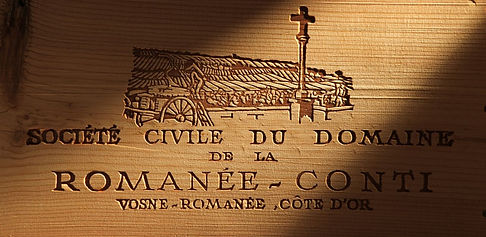

S
A B C D E F G H I J K L M N O P Q R S T U V W X Y Z
SAXU-SCRE
SAAL-SAIN SAIN-SAIN SAIN-SASS SASS-SAVO SAXU-SCRE SCRE-SICI SIGN-SONO SONO-STAG STAG-SUPE
Only 4,5 and 5,0 NJP wines (Nenad Jelisic Points) are presented as the best vintages.
If for some wine behind “the best vintages” stands “none”, it means that none of the wine's vintages got 4,5 NJP or 5,0 NJP.
Saxum, Bone Rock (red dry blend wine) Paso Robles, San Luis Obispo County, Central Coast, California, USA, the best vintages, 2002, 2003, 2005, 2006, 2007, 2008, 2010, 2011, 2012, 2013, 2015 and 2016. (2018-11)
Saxum, Booker Vineyard (red dry blend wine; Syrah and Mourvedre) Paso Robles, San Luis Obispo County, Central Coast, California, USA, the best vintages, 2007, 2008, 2009, 2010, 2011, 2012, 2013, 2014 and 2016. (2018-11)
Saxum, Broken Stones (red dry blend wine) Paso Robles, San Luis Obispo County, Central Coast, California, USA, the best vintages, 2002, 2003, 2006, 2007, 2009, 2010, 2011, 2012, 2013, 2014, 2015 and 2016. (2018-11)
Saxum, Heart Stone Vineyard (red dry blend wine) Paso Robles, San Luis Obispo County, Central Coast, California, USA, the best vintages, 2007, 2010, 2011, 2012, 2013, 2014, 2015 and 2016. (2018-11)
Saxum, James Berry Vineyard (red dry blend wine) Paso Robles, San Luis Obispo County, Central Coast, California, USA, the best vintages, 2005, 2006, 2007, 2008, 2009, 2010, 2011, 2012, 2013, 2014, 2015 and 2016. (2018-11)
Saxum, Paderewski Vineyard (red dry blend wine) Paso Robles, San Luis Obispo County, Central Coast, California, USA, the best vintages, 2009, 2010, 2011, 2012, 2013, 2014, 2015 and 2016. (2018-11)
Saxum, Terry Hoage Vineyard (red dry blend wine) Paso Robles, San Luis Obispo County, Central Coast, California, USA, the best vintages, 2010, 2011, 2012, 2013, 2014 and 2015; not 2016. (2018-11)
Scarecrow, Cabernet Sauvignon (red dry wine), Rutherford, Napa Valley, North Coast, California, USA, the best vintages, 2003, 2004, 2005, 2007, 2010, 2012, 2013, 2014, 2015 and 2016. (2018-11)
Scarecrow, Cabernet Sauvignon, M Étain (red dry blend wine), Rutherford, Napa Valley, North Coast, California, USA, the best vintages, until vintage 2015 none; 2016. (2018-11)
Schrader Cellars, Beckstoffer George III Vineyard, Cabernet Sauvignon (red dry wine), Oakville, Napa Valley, North Coast, California, USA, the best vintages, 2006, 2007, 2008, 2009, 2010, 2012, 2013 and 2014. (2018-11)
Schrader Cellars, Beckstoffer To Kalon Vineyard T6, Cabernet Sauvignon (red dry wine), Oakville, Napa Valley, North Coast, California, USA, the best vintages, 2003, 2005, 2006, 2007, 2008, 2009, 2012, 2013, 2014, 2015, 2016 and 2017. (2018-11)
Schrader Cellars, CCS, Cabernet Sauvignon (red dry wine), Oakville, Napa Valley, North Coast, California, USA, the best vintages, 2004, 2005, 2006, 2007, 2008, 2009, 2010, 2011, 2012, 2013, 2014, 2015, 2016 and 2017. (2018-11)
Schrader Cellars, Old Sparky, Cabernet Sauvignon (red dry wine), Oakville, Napa Valley, North Coast, California, USA, the best vintages, 2002, 2003, 2004, 2005, 2006, 2007, 2008, 2009, 2010, 2011, 2012, 2013, 2014, 2015 and 2016. (2018-11)
Schrader Cellars, RBS To Kalon Vineyard, Cabernet Sauvignon (red dry wine), Oakville, Napa Valley, North Coast, California, USA, the best vintages, 2004, 2006, 2007, 2008, 2009, 2010, 2012 and 2016; not 2017. (2014-06)
Screaming Eagle, an American winery that is located in the appellation (AVA) Oakville, which itself is located in the appellation (AVA) Napa Valley, which in turn is located in the North Coast wine region in California. Screaming Eagle has 20 ha and its yield lies at low 28 hl/ha. (2021-01)
Screaming Eagle, an American wine that comes from the Screaming Eagle winery and one of the most internationally known and rare red wines from the USA. The production is extremely small, only 6,000 to 9,600 bottles per year are produced, i.e., 4,5 to 7,2 hl/ha per year. That there is such a big difference between the yield (28 hl/ha) and the production (4,5 to 7,2 hl/ha) is explained by the fact that all wine that does not meet the winery’s extremely high quality requirements goes to the winery’s second wine Screaming Eagle Second Flight/The Flight. If you want the wine fast, you must pay at least 3,000 USD for a 0,75 litre bottle else you must wait on the winery’s waiting list for many years before you get, if you get, your three bottles for a price of 4,300 USD. You read well; you can only buy 3 bottles for a price of 1,450 USD per bottle. The wine is made of Cabernet Sauvignon with a small portion (about 10 to 12%) of Cabernet Franc and Merlot. The grapes for this wine are hand-harvested in up to five batches. The purpose of the repetitive harvest is that only the absolute best and most mature grapes end up in the wine. Screaming Eagle’s 20 ha are divided into 45 different lots and the grapes from them are fermented in 45 different stainless steel tanks. What characterizes this wine is the extreme selection that takes place both in the vineyard (up to five times) and in the wine cellar (selection of both grapes and wine from different barrels). As has already been mentioned above, if one when selecting wines discovers that some wine from some oak barrel does not meet the winery's extremely high quality requirements, it will go to the winery’s second wine Screaming Eagle Second Flight/The Flight. Before the wine is bottled, it is aged in 225 litres French oak barrels, 75% new, for about 20 months. (2021-01)
Screaming Eagle (red dry blend wine; Cabernet Sauvignon, Merlot and Cabernet Franc), Oakville, Napa Valley, California, USA, the best vintages, 1992, 1993, 1995, 1996, 1997, 1999, 2001, 2002, 2003, 2004, 2005, 2006, 2007, 2008, 2009, 2010, 2012, 2013, 2014, 2015, 2016 and 2018. (2021-01)
Screaming Eagle, Second Flight/The Flight (red dry blend wine; Cabernet Sauvignon, Merlot and Cabernet Franc), Oakville, Napa Valley, California, USA, the best vintages, up to and including vintage 2014 none; 2015, 2016 and 2018.


NJ Wines
 |  |  |  |  |  |
|---|